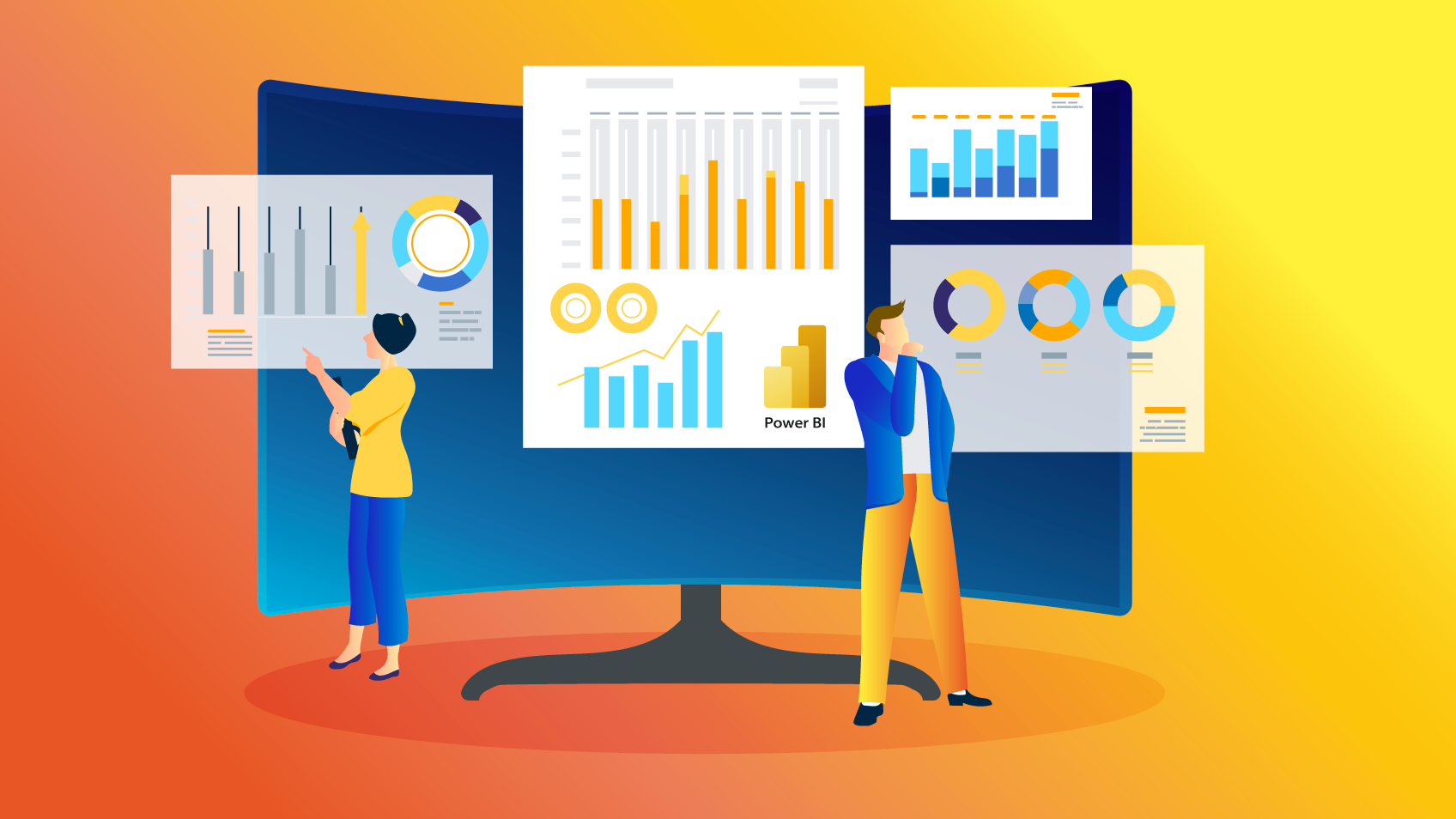Data is an asset that has become an integral element of the business world. It is able to either make or break an organization. To maximize the potential of data, companies use powerful tools such as Power BI and Microsoft Fabric. These platforms form the core of business intelligence and, when combined with Azure Data Factory they become an extremely powerful tool to make data-driven decisions and analytics.

Power BI – Your Business Intelligence Companion
Power BI is a business intelligence tool from Microsoft that helps organizations visualize their information and share information. Power BI lets users create interactive reports and dashboards, transforming raw data into actionable data.
Whether you’re a small startup or a large enterprise, Power BI adapts to your needs. It integrates with multiple sources of data, making it easier for users to combine the data from different systems and databases. With its simple drag-and-drop interface, even non-technical users can quickly develop insightful reports and analyzes.
Power BI’s platform supports instantaneous data processing. This means you always have the most current data. The platform provides a variety of graphs and visualizations that allow you to present information in a comprehensible, appealing manner. It is crucial to share and collaborate on reports. This can help in improving decisions within your business and help create a data-driven workplace.
Microsoft Fabric Weaving Data Excel
Microsoft Fabric is a framework that orchestrates and connects data from Microsoft services. Fabric is the thread that ties your data into a unified useful entity that allows organizations to draw insights effortlessly.
Microsoft Fabric is the foundation of the integrity of data and its consistency in a world where businesses are faced with ever-growing volumes of data. It is integrated with a variety of services, from Azure Data Lake Storage and Azure SQL Data Warehouse, to Power BI and more. The platform’s interconnectivity allows data flow and insight across multiple sources.
Microsoft Fabric’s capabilities for data transformation provide an excellent example of its flexibility. It is a great tool to wrangle data, cleanse and make it ready for analysis, and ensure it adheres to the policies of your data governance organization. Microsoft Fabric is the system that guarantees that your data is secure as well as accurate and well-prepared for analytics.
Azure Data Factory – The Gateway to Data Transformation
Azure Data Factory is another crucial component of the contemporary business intelligence ecosystem. It’s a cloud data integration service which allows you design, schedule and manage workflows that are data-driven. Azure Data Factory provides meaningful insight through the orchestration of data movement and transformation.
Azure Data Factory has many advantages, among them its capability to connect to diverse data sources. If your data is on premises or is in the cloud it can be integrated seamlessly to give you an entire picture of the data ecosystem. The platform is able to handle batch processing, real-time data streams, and big data analytics, making it suitable for a wide range of uses.
Azure Data Factory offers a visual interface to facilitate the creation of data pipelines. It’s easy to build and manage data workflows, even when you’re not a coder. Users can be in control of data integration as well as self-service data preparation.
Power BI with Microsoft Fabric, Azure Data Factory, and Power BI
When Power BI is combined with Microsoft Fabric and Azure Data Factory and Azure Data Factory, they form a powerful trio that could revolutionize data analytics. How do they interact?
1. Data Integration: Azure Data Factory is capable of connecting to various data sources. This will ensure that all data you have are available. Microsoft Fabric orchestrates the data from various services by using this data integration feature. This will ensure that your data is organized, cleaned, and ready for analysis in Power BI.
2. Data Transformation: Microsoft Fabric is a key component of data transformation. It lets you alter your data in accordance with your requirements. Fabric helps ensure that data is prepared for analysis, whether it’s cleaning or transforming data.
3. Power BI is able to assist after the data has been prepared and refined. It enables you to create visually appealing reports and dashboards, making complex data easy to understand. You can then present these findings and inspire your team members to take data-driven decisions.
4. Scalability: Azure Data Factory can scale to accommodate growing data volumes. Combining Power BI with Microsoft Fabric will make sure that your data is stable and reliable even as your company grows.
5. Real-time Insights: With real-time data processing capabilities, Power BI and Azure Data Factory give you the most current information that are vital for making quick decisions.
Conclusion
To be competitive in the world of business intelligence companies must utilize data efficiently. Power BI, Microsoft Fabric and Azure Data Factory offer a powerful combination that can propel your business intelligence initiatives to new levels. The three tools will allow you to produce stunning visuals, ensure the consistency of your data, or simplify your data-related workflows. Embrace the potential of business intelligence and unlock the potential of your data.